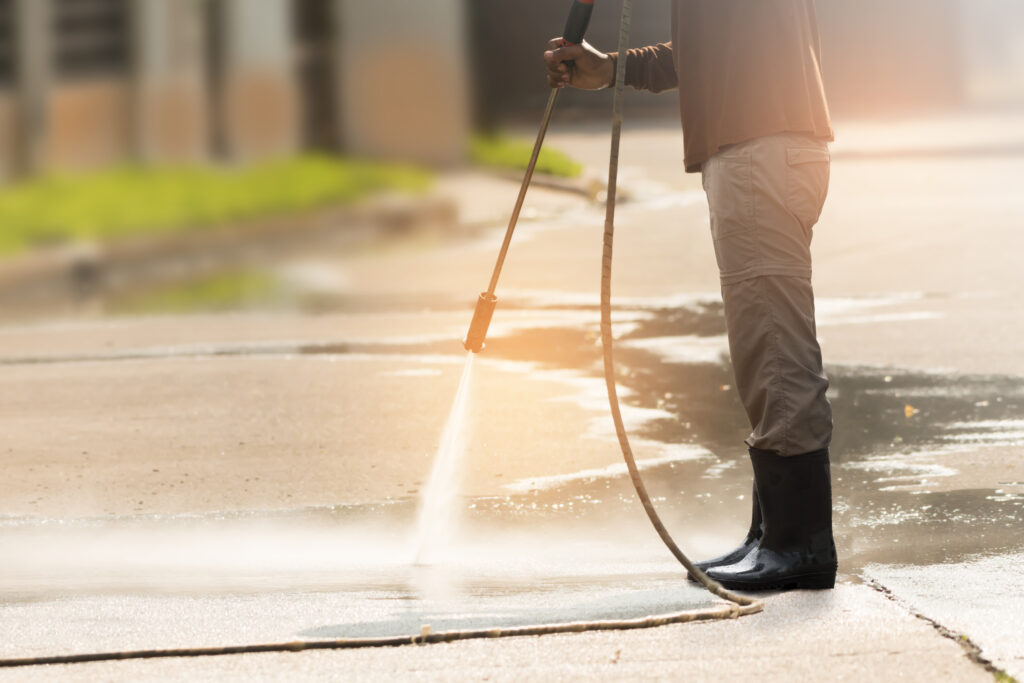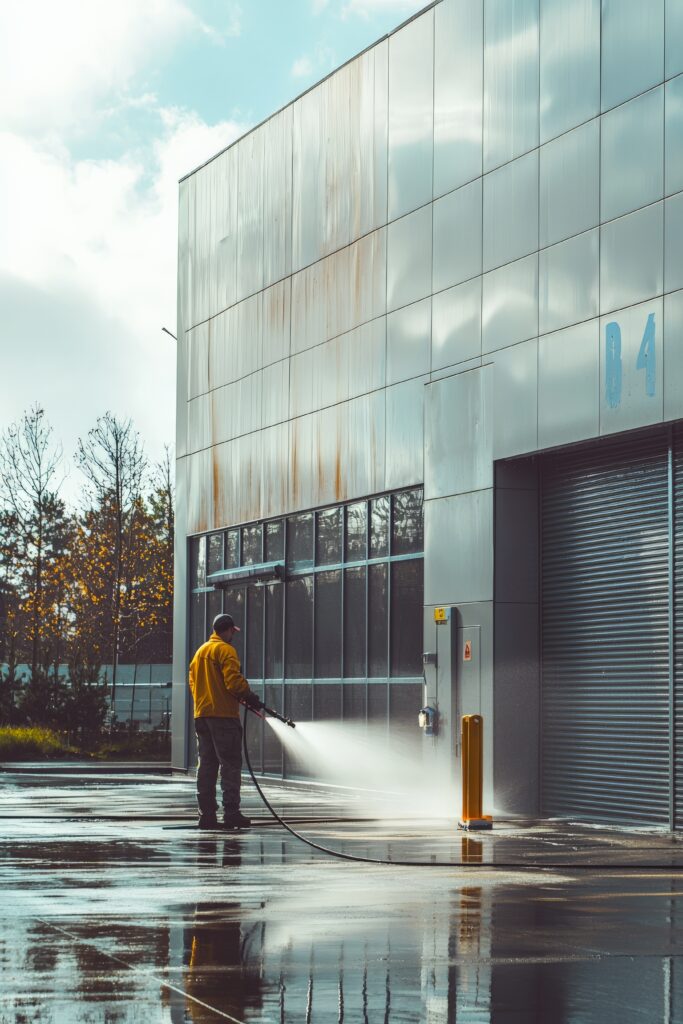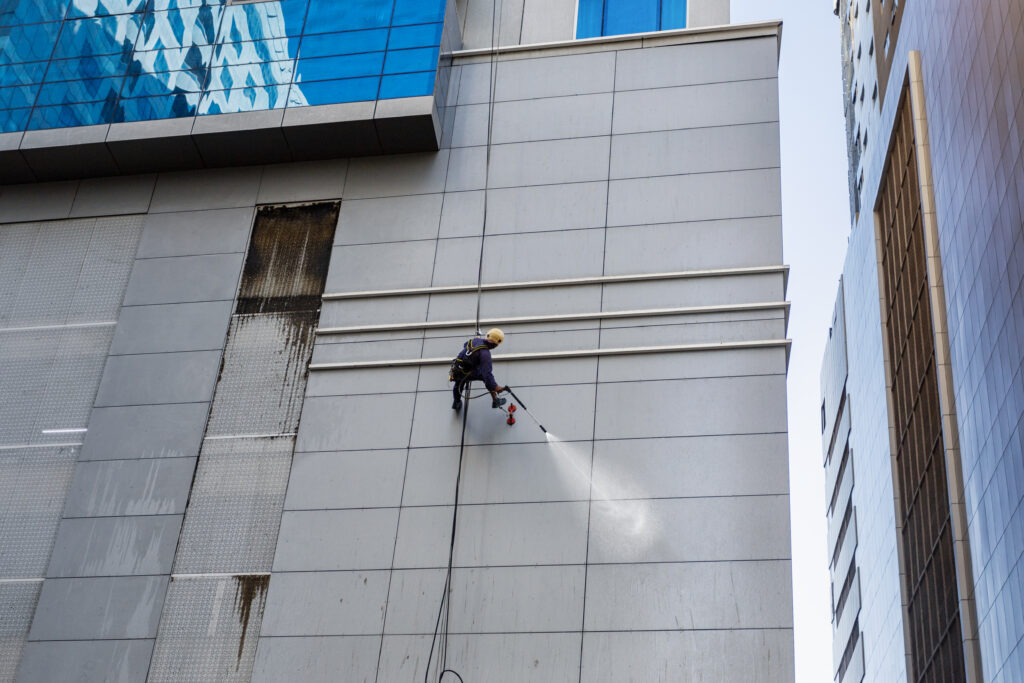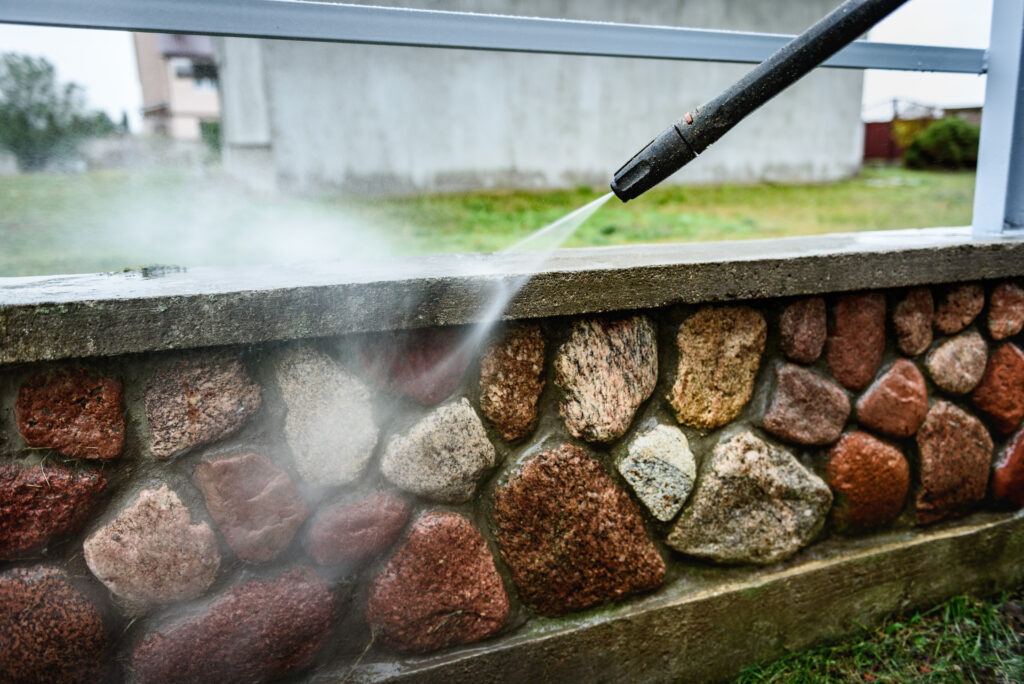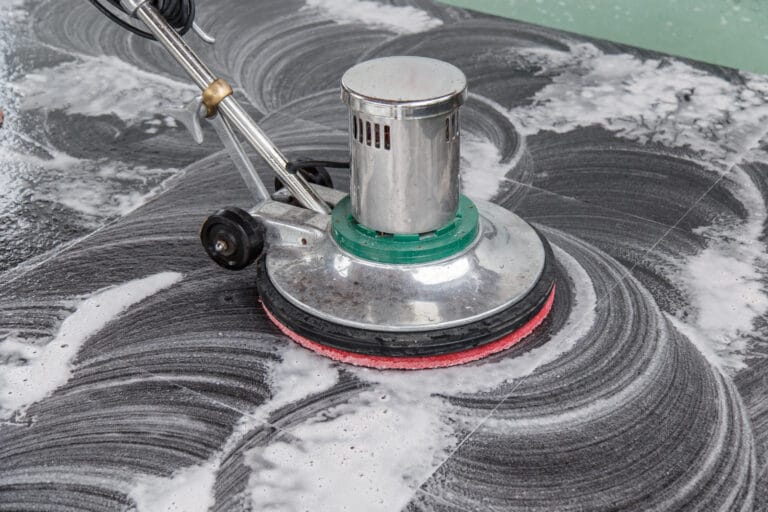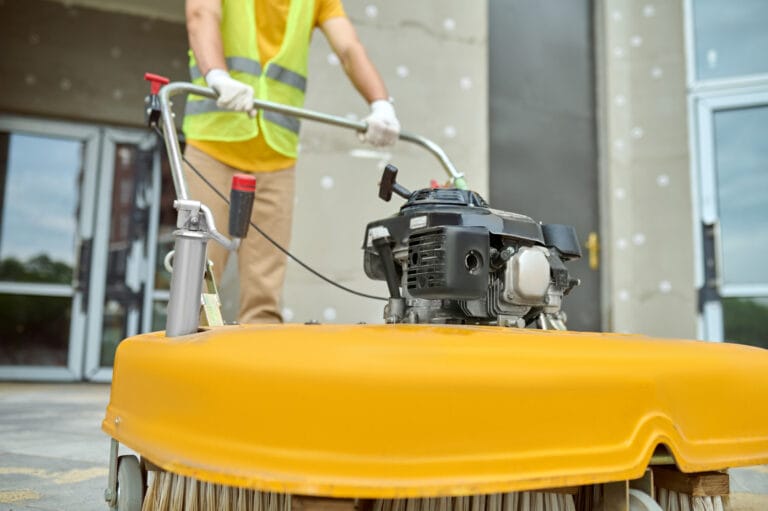Exterior power washing is an essential maintenance practice that significantly enhances the aesthetic appeal and longevity of a building. In Northern California, where the climate can vary from coastal humidity to dry heat, the exterior surfaces of buildings are often subjected to a range of environmental stressors. Dust, dirt, algae, and mildew can accumulate over time, leading to not only unsightly appearances but also potential structural damage.
Regular power washing helps to remove these contaminants, ensuring that the building remains visually appealing and structurally sound. Moreover, exterior power washing plays a crucial role in preserving property value. A clean exterior can make a significant difference in how a property is perceived, whether it’s a residential home or a commercial establishment.
Potential buyers or clients are more likely to be attracted to a well-maintained property. By investing in regular power washing, property owners in Northern California can protect their investment and enhance curb appeal, which is particularly important in competitive real estate markets.
Key Takeaways
- Exterior power washing is important for maintaining the appearance and structural integrity of buildings.
- Choosing the right power washing equipment is crucial for achieving the best results and preventing damage.
- Safety precautions, such as wearing protective gear and using the equipment properly, are essential for power washing.
- Properly preparing the building, including covering windows and landscaping, is necessary before power washing.
- Different surfaces require different power washing techniques to avoid damage and achieve the best results.
Choosing the Right Power Washing Equipment
Selecting the appropriate power washing equipment is vital for achieving effective results while minimizing potential damage to surfaces. There are various types of power washers available, including electric and gas-powered models, each with its own advantages and disadvantages. Electric power washers are generally quieter and more suitable for light-duty tasks, making them ideal for residential use.
In contrast, gas-powered models offer higher pressure levels and are better suited for heavy-duty cleaning tasks, such as commercial applications or larger residential properties. When choosing equipment, it is also essential to consider the pressure rating and flow rate. The pressure rating, measured in pounds per square inch (PSI), indicates the force of the water being expelled.
For instance, a pressure washer with a rating of 3000 PSI is suitable for tough jobs like removing paint or cleaning concrete surfaces. The flow rate, measured in gallons per minute (GPM), determines how quickly the job can be completed. A higher GPM means more water is being used, which can lead to faster cleaning times.
Therefore, understanding the specific needs of the cleaning task at hand will guide property owners in selecting the right equipment.
Safety Precautions for Power Washing
Safety should always be a top priority when engaging in power washing activities. The high-pressure water jets can pose significant risks if not handled properly. It is crucial to wear appropriate personal protective equipment (PPE), including safety goggles, gloves, and non-slip footwear.
These items help protect against potential injuries from flying debris or accidental slips on wet surfaces. Additionally, it is important to be aware of the surroundings while power washing. This includes ensuring that bystanders are at a safe distance and that pets are kept indoors during the cleaning process.
Furthermore, operators should be cautious of electrical outlets and wiring that may be present on the building’s exterior. Water and electricity do not mix well; therefore, it is advisable to turn off any electrical sources near the area being cleaned to prevent accidents.
Preparing the Building for Power Washing
Before commencing power washing, proper preparation of the building is essential to ensure effective cleaning and prevent damage. Start by removing any outdoor furniture, decorations, or obstacles that may obstruct access to the surfaces being cleaned. This not only facilitates a thorough cleaning process but also protects these items from potential water damage or debris.
Next, it is advisable to inspect the building’s exterior for any loose materials or structural issues. Cracked siding or peeling paint should be addressed before power washing to avoid exacerbating these problems during the cleaning process. Additionally, covering windows and doors with plastic sheeting can help prevent water from entering the building and causing interior damage.
Taking these preparatory steps will lead to a more efficient power washing experience and better overall results.
Power Washing Techniques for Different Surfaces
Different surfaces require specific power washing techniques to achieve optimal results without causing damage. For instance, concrete surfaces are typically more durable and can withstand higher pressure settings. A fan spray nozzle can be used to cover larger areas effectively while ensuring that dirt and grime are removed efficiently.
On the other hand, softer surfaces such as wood require a gentler approach. Using a lower pressure setting and a wide-angle nozzle will help prevent splintering or damaging the wood fibers. It is also beneficial to apply a wood cleaner before power washing to enhance the cleaning process and restore the wood’s natural beauty.
For painted surfaces, caution is paramount. High pressure can strip paint away, leading to costly repairs. A lower pressure setting combined with a specialized paint-safe detergent can help clean these surfaces without compromising their integrity.
Understanding the unique requirements of each surface type will ensure that power washing is both effective and safe.
Dealing with Tough Stains and Mold
Tough stains and mold can be particularly challenging when it comes to exterior cleaning. These issues often require specialized treatment beyond standard power washing techniques. For stubborn stains such as oil or rust, using a targeted cleaner designed for those specific types of stains can yield better results.
Applying these cleaners before power washing allows them to penetrate and break down the stains more effectively. Mold and mildew are common problems in humid areas of Northern California. To combat these issues, it is essential to use a mold-killing solution that can be applied prior to power washing.
This not only helps eliminate existing mold but also prevents future growth by treating the underlying causes. After applying the solution, allow it to sit for a few minutes before using the power washer to rinse away both the mold and the cleaner.
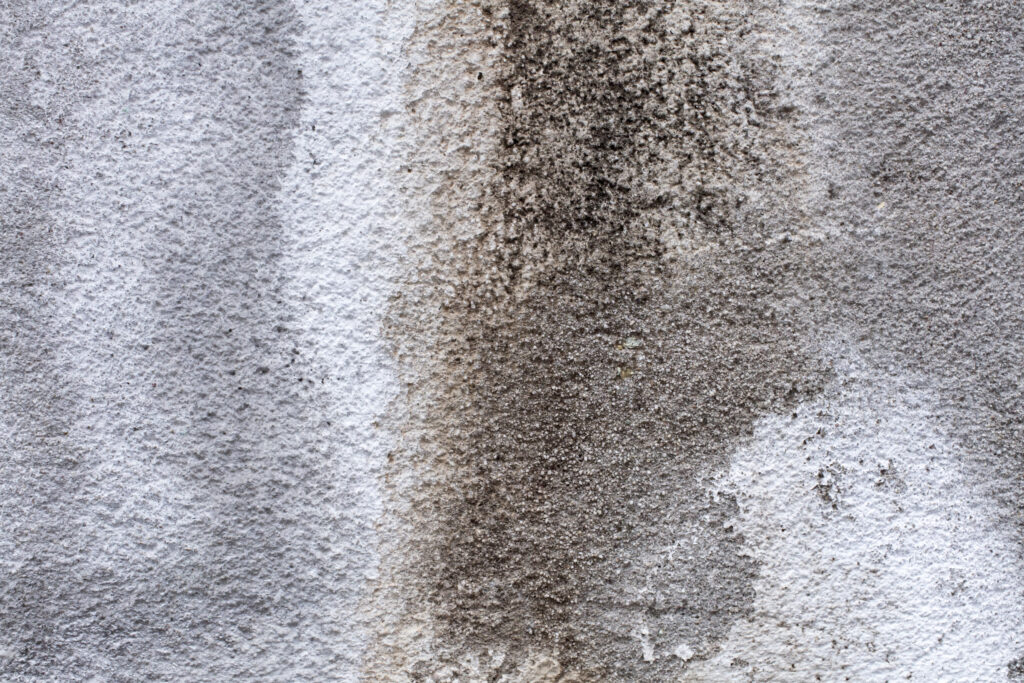
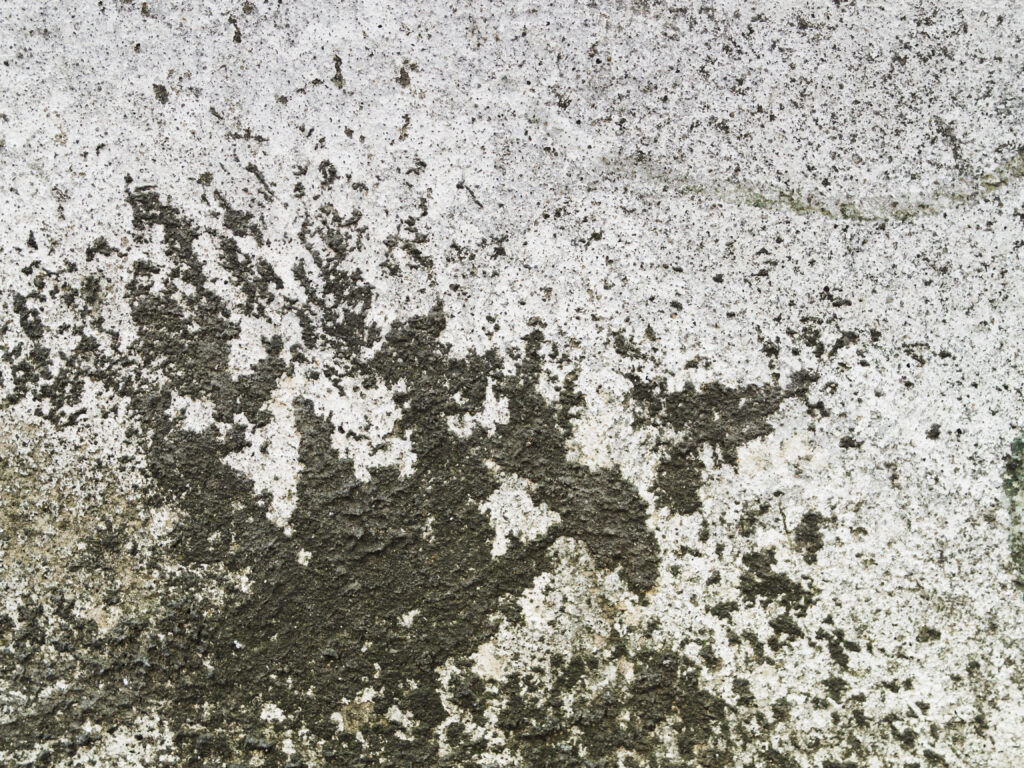
Environmental Considerations for Power Washing
Power washing can have environmental implications that should not be overlooked. The runoff from power washing can carry detergents, dirt, and other contaminants into storm drains and local waterways, potentially harming aquatic ecosystems. Therefore, it is crucial to choose eco-friendly cleaning solutions that minimize environmental impact.
Additionally, property owners should consider using water reclamation systems that capture runoff during the cleaning process. This not only helps protect local water sources but also conserves water—a vital resource in California’s often drought-prone climate. By being mindful of environmental considerations, property owners can ensure that their cleaning practices are both effective and responsible.
Post-Power Washing Maintenance
After completing a power washing session, implementing post-cleaning maintenance is essential for preserving the results achieved. One effective strategy is to apply a protective sealant on surfaces such as concrete or wood after they have dried completely. Sealants help prevent future staining and damage from moisture or UV rays, extending the life of the surface.
Regular inspections should also be conducted following power washing to identify any areas that may require additional attention or maintenance. This proactive approach allows property owners to address potential issues before they escalate into more significant problems. By committing to ongoing maintenance after power washing, property owners can enjoy long-lasting cleanliness and protection for their buildings.
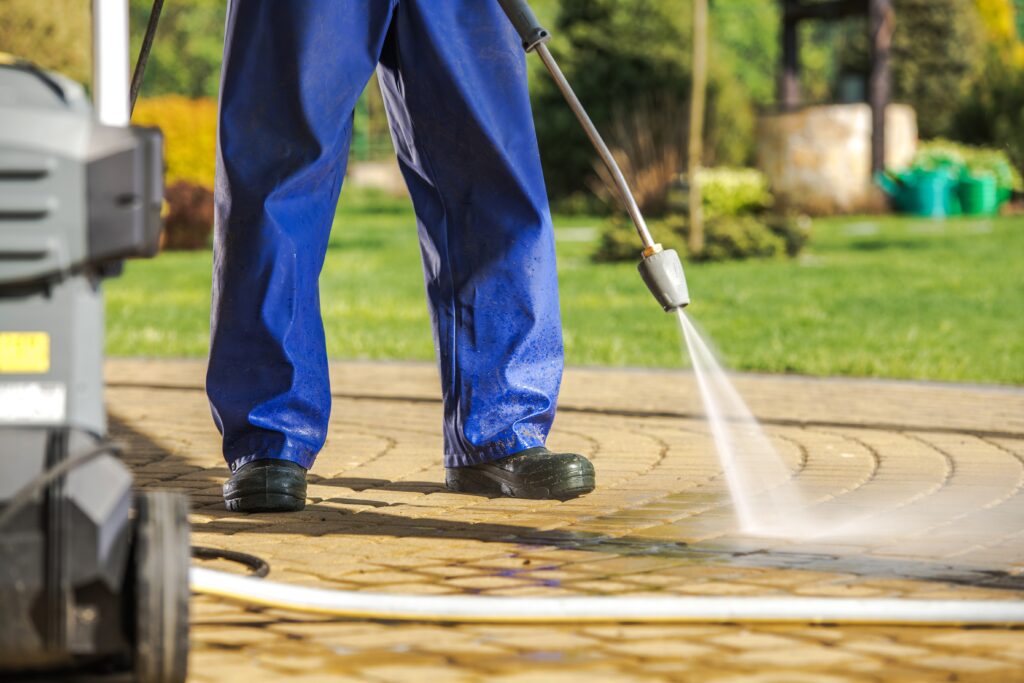
Hiring a Professional Power Washing Service
While DIY power washing may seem appealing, hiring a professional service like United Facilities Group offers numerous advantages that can save time and ensure quality results. Professionals possess specialized equipment and expertise that allow them to tackle even the most challenging cleaning tasks efficiently and safely. Moreover, professional services are equipped with knowledge about local regulations regarding water usage and environmental considerations in Northern California.
This ensures compliance with local laws while providing effective cleaning solutions tailored to specific needs. By entrusting power washing tasks to experts, property owners can focus on other priorities while enjoying peace of mind knowing their property is in capable hands.
DIY Power Washing Tips
For those who prefer a hands-on approach to power washing, there are several tips that can enhance the effectiveness of DIY efforts while ensuring safety and efficiency. First and foremost, always read the manufacturer’s instructions for both the power washer and any cleaning solutions being used. Understanding how to operate equipment correctly is crucial for achieving desired results without causing damage.
Additionally, starting with lower pressure settings is advisable for beginners or when working on delicate surfaces. Gradually increasing pressure as needed allows for better control over the cleaning process while minimizing risks of damage. Finally, practicing proper technique—such as maintaining a consistent distance from surfaces—will lead to more uniform results.


Benefits of Regular Exterior Power Washing
Regular exterior power washing offers numerous benefits that extend beyond mere aesthetics. One of the most significant advantages is the prevention of long-term damage caused by dirt buildup, mold growth, and other contaminants. By maintaining clean surfaces through regular power washing, property owners can avoid costly repairs associated with neglect.
Furthermore, regular cleaning enhances curb appeal, making properties more attractive to potential buyers or clients in Northern California’s competitive market. A well-maintained exterior reflects positively on property owners and businesses alike, fostering trust and credibility within the community. Ultimately, investing in regular exterior power washing is a proactive measure that pays dividends in both appearance and property value over time.
FAQs
What is power washing?
Power washing, also known as pressure washing, is the use of high-pressure water spray to remove dirt, grime, mold, and other contaminants from surfaces. It is commonly used to clean exterior surfaces such as buildings, sidewalks, and driveways.
Why is power washing important for Bay Area buildings?
The Bay Area’s climate can lead to the buildup of dirt, pollution, and mildew on building exteriors. Power washing is important for maintaining the appearance and integrity of buildings in the Bay Area, as well as for preventing damage from contaminants.
What are the benefits of power washing for Bay Area buildings?
Power washing can improve the curb appeal of buildings, remove harmful contaminants that can cause deterioration, and prolong the lifespan of exterior surfaces. It can also help maintain a healthy and clean environment for building occupants.
What surfaces can be power washed?
Power washing is suitable for a variety of exterior surfaces, including concrete, brick, stucco, vinyl, and wood. However, it is important to use the appropriate pressure and techniques for each specific surface to avoid damage.
Is power washing safe for the environment?
Power washing can be environmentally friendly when using biodegradable and eco-friendly cleaning solutions. Additionally, capturing and properly disposing of wastewater is important to prevent contaminants from entering the environment.
How often should Bay Area buildings be power washed?
The frequency of power washing for Bay Area buildings depends on factors such as the location, climate, and level of contaminants. Generally, buildings may benefit from power washing at least once a year to maintain their appearance and integrity.
